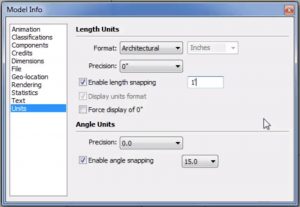

Snaps onto the middle of a symbol or a 2D line. Snaps onto any end of a symbol or 2D line. It is up to each Extension owner whether or not to implement this feature.īelow are what each Graphical snapping option represents: End
SKETCHUP MAKE COMPONENTS SNAP TO EACHOTHER MANUAL
To take manual control over basic surface snapping, you can use the Graphical snapping feature. Once you release the key, components will resume snapping. Or hold down Shift on your keyboard to temporarily disable snapping. Select a component and click the Disable snapping icon to disable snapping until you enable it again. This tool is also used for disabling snapping for components that are already in the drawing. When you close CET, it will automatically go back to being enabled. The toggle for Enable/Disable snapping in the toolbar will remember its state during the current session. To deactivate the snapping function over a period of time, click the Disable snapping icon on the 2D view or the 3D view toolbar: Snapping can be temporarily disabled by pressing and holding the Shift key while a component is being placed in the drawing area. There may be times when you want to disable the snapping function. The yellow triangle (in the 3D view the triangle appears as a cone) identifies that the component is selected and snapped to another component at that connection point.The yellow square (in the 3D view the square appears as a cylinder) identifies that the component is selected and not snapped to another component at that connection point.Snap points look different in the 2D view and the 3D view and whether they are snapped or not: Others snap together leaving space in between, and still others snap along a line. Some components snap together at their edges. These snap points allow components to automatically attach to each other.

Maybe plug-ins can help with that.Most components in CET have snap points. It therefore cannot calculate volume or weight. That's because it only works with lines and surfaces, this means everything is hollow. Sketchup does not provide any information on objects besides the visual skin. Camera angle is relevant for snapping 2-dimensional tools (like rotation-tool or circle-tool. You can use arrow keys to snap the moving direction onto an axis. When you move or draw things in sketchup they almost always snap onto existing corners, lines, axes or surfaces. You can save components individually and import them into other models. Components can be stacked into each other. If you don't want the other ones to change, you can make a component unique. If you copy that component and change one of the copies, the other ones change too. You can make components in sketchup, simply by selecting it and pressing "G" on your keyboard.
SKETCHUP MAKE COMPONENTS SNAP TO EACHOTHER SKIN
One other question I have: I know SketchUp provides materials to skin objects with, but is it able to provide any additional information about those objects? For example, if I make several rods made of high-carbon steel, can SketchUp tell me the total dimensions and weight of materials used in the design?ĪFAIK (not using sketchup much, pretty much beginner): What I'm wondering is, can SketchUp let me 'build' product designs by reusing components? What I mean to say is, can I create a library of parts/ components to build my design with (eg, rods, screws, bolts, interconnectors etc)? And can I build my design in a similar way to a Lego model? For example, if I have a part with a female socket in it, can a corresponding part just slot into/snap into it? I've designed (on paper) a product made of multiple parts and components. I'm used to working on paper for my coursework, but I thought I'd brave having a go with CAD, so I'm learning my way through SketchUp at the moment.


 0 kommentar(er)
0 kommentar(er)
